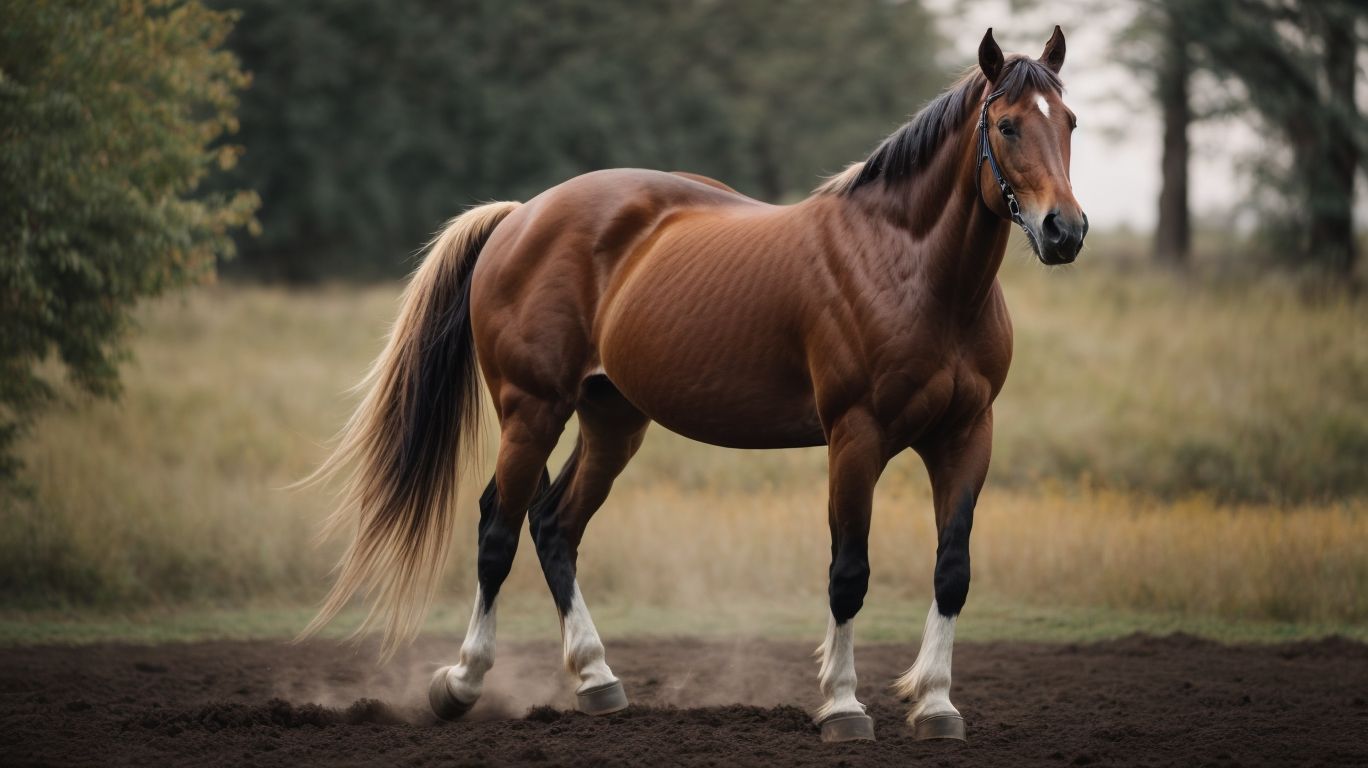Understanding Horse Behavior Management
When it comes to horse training and handling, it is essential to have a thorough understanding of horse behavior management. This includes not only working with horses under saddle but also developing effective ground manners. Ground manners refer to a set of behaviors and manners that a horse is expected to follow when interacting with humans on the ground.
Why are Ground Manners Important in Horse Training?
Ground manners play a crucial role in establishing a solid foundation for training and building a strong relationship between humans and horses. It is through consistent and proper ground manners that horses learn to respect and trust their handlers, making the training process smoother and safer.
Building a Strong Foundation with Ground Manners
To establish good ground manners, several key aspects need to be addressed:
1. Establishing Respect and Trust: This involves teaching the horse to respond to cues, maintain personal space boundaries, and yield to pressure.
2. Teaching Ground Tying: Ground tying is teaching a horse to stand still and remain in place without being tied. This is a valuable skill for various situations.
3. Leading and Haltering Properly: Teaching a horse to lead calmly, without pulling or dragging, and to accept the halter easily is fundamental for safe handling.
4. Desensitizing to Common Objects and Sounds: Introducing the horse to different objects, sounds, and stimuli helps them become more confident and less reactive.
5. Teaching Safe Standing and Ground Handling: This includes grooming, picking up hooves, and other basic handling tasks that ensure the horse remains calm and cooperative on the ground.
Troubleshooting Common Ground Manners Issues
While working on ground manners, it is common to encounter behavioral challenges. Addressing these issues promptly is crucial to maintain proper ground manners. Some common issues include nipping and biting, pushiness and ignoring personal space, bucking or kicking out, and resistance to leading or haltering.
Further Ground Manners Training Tips and Techniques
To enhance ground manners training, various techniques and exercises can be incorporated:
1. Groundwork Exercises: Engaging in exercises such as yielding hindquarters, backing up, and lunging on the ground can improve communication and responsiveness between horse and handler.
2. Longeing and Round Pen Work: Longeing and working a horse in a round pen provide opportunities for controlled movement and exercise, helping to establish trust and obedience.
3. Liberty Training: Liberty training allows for training without the use of any physical contact, further enhancing the horse’s willingness to follow commands and respond to cues.
4. Advanced Ground Manners for Special Situations: Depending on the specific needs of the horse, advanced ground manners training may be necessary. This could involve trailer loading, desensitization to specific stimuli, or other specialized training techniques.
By focusing on and investing time in developing strong ground manners, handlers can ensure a safer and more enjoyable experience when working with their horses both on the ground and under saddle.
Key Takeaways:
- Establishing ground manners is vital in horse training: Ground manners are important as they build a strong foundation of respect and trust between the horse and handler.
- Address common ground manners issues: Troubleshooting common problems such as nipping, pushiness, bucking, and resistance to leading or haltering is crucial for effective horse behavior management.
- Explore advanced training techniques: Groundwork exercises, longeing, round pen work, and liberty training can help enhance horse ground manners and prepare them for special situations.
Understanding Horse Behavior Management
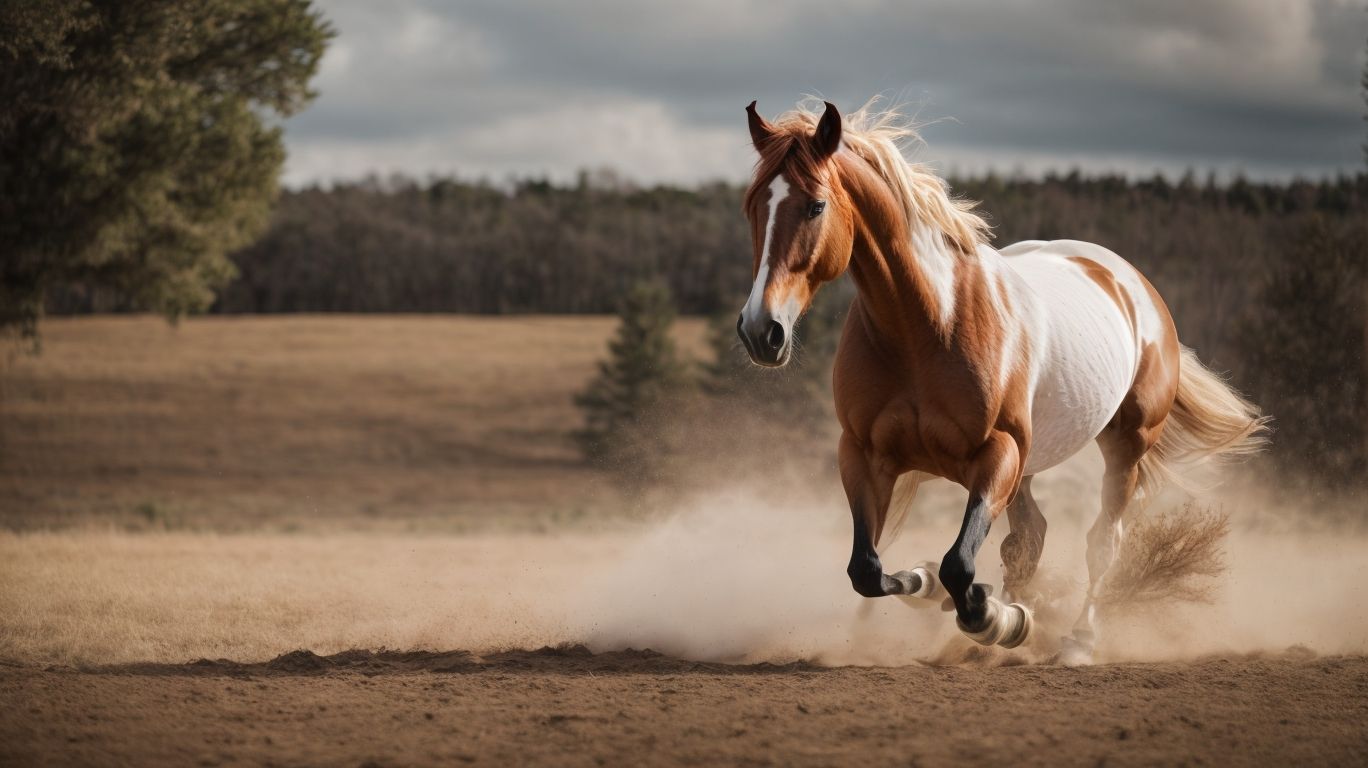
Photo Credits: Www.Horsespeakeducation.Com by Willie Roberts
Understanding horse behavior management is essential for the well-being and safety of both horses and handlers. By following these steps, you can effectively manage horse behavior:
- Observe: Take the time to watch and learn about horse behavior from a distance. This will help you understand their natural instincts and communication signals.
- Establish Boundaries: Set clear boundaries and consistently enforce them with your horse. This will help establish respect and ensure safety.
- Provide Consistent Training: Consistency is key when training horses. Use positive reinforcement techniques to teach them desired behaviors and reinforce them regularly.
- Use Body Language: Horses are highly responsive to body language. Learn to communicate with your horse using subtle cues and gestures.
- Build Trust: Trust is important in horse behavior management. Spend time building a relationship with your horse through grooming, groundwork, and bonding activities.
In 2015, a thoroughbred ex-racehorse named Seabiscuit had severe behavior issues due to past mistreatment. Through understanding horse behavior management and using positive reinforcement techniques, his new owner was able to rehabilitate him and turn him into a successful show horse. Seabiscuit’s story is a testament to the power of understanding and properly managing horse behavior.
What are Horse Ground Manners?
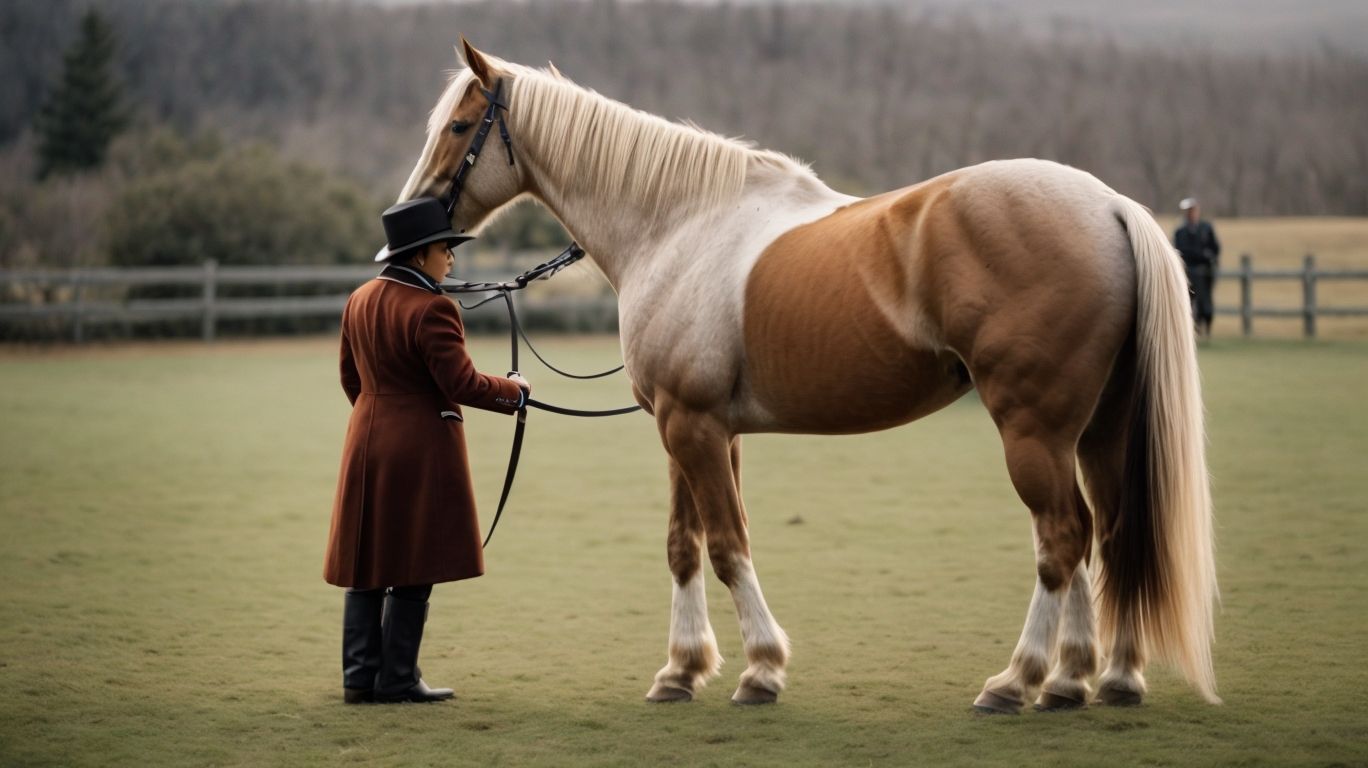
Photo Credits: Www.Horsespeakeducation.Com by Frank Rodriguez
Horse ground manners, also known as equine ground manners, are the expected behavior and etiquette displayed by horses when interacting with humans on the ground. These manners are crucial for ensuring the safety and cooperation of both the horse and the handler. At the core of horse ground manners is the concept of respecting personal space, wherein horses learn to maintain an appropriate distance from humans. Additionally, horses are trained to walk calmly beside their handlers, exhibiting disciplined behavior. They are also taught to stand quietly during grooming sessions as well as veterinary procedures, displaying patience and cooperation. Furthermore, horses are expected to behave appropriately while being fed and during other activities. The process of teaching and reinforcing good horse ground manners is vital for the establishment of a respectful and trusting relationship between the horse and the handler. Consistency in training methods and clear communication are essential in cultivating and maintaining these desired manners.
Why are Ground Manners Important in Horse Training?
Ground manners in horse training are extremely important as they form the basis for a respectful and safe partnership between the horse and handler. It is essential to teach horses good ground manners as it makes them easier to handle, more obedient, and reduces the risks they can pose to humans and themselves. By focusing on teaching a horse to respect personal space, leading and haltering correctly, and desensitizing them to everyday objects and sounds, we are able to build trust and establish clear communication. Having good ground manners also enables us to effectively address any behavioral issues that may arise during training. Let me share a true story with you: At our stable, we had a horse that initially lacked ground manners but after consistent training, he transformed into a well-behaved and reliable partner, thereby ensuring a harmonious training experience for both the horse and rider.
Building a Strong Foundation with Ground Manners
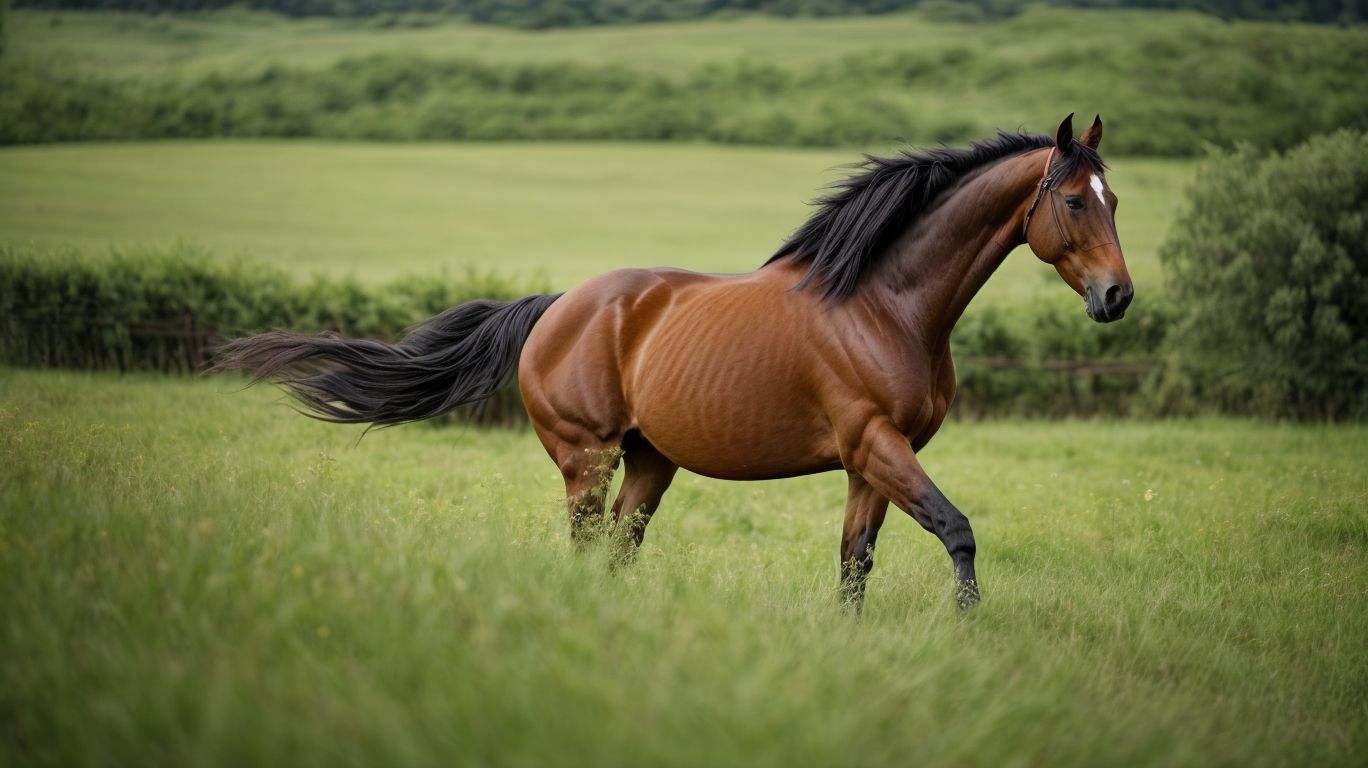
Photo Credits: Www.Horsespeakeducation.Com by Walter Rodriguez
Building a strong foundation with ground manners is crucial when it comes to horse behavior management. In this section, we will discover the secrets to establishing respect and trust with your horse. Learn the art of teaching ground tying, leading, and haltering properly, as well as desensitizing your equine companion to common objects and sounds. Get ready to master the skills of teaching safe standing and expertly handling your horse on the ground. Let’s create a harmonious bond and ensure the safety and well-being of both horse and handler.
Establishing Respect and Trust
To establish respect and trust with your horse, it is imperative to prioritize their safety and well-being. The key to building a strong foundation with ground manners is consistency and clear communication. Utilize positive reinforcement techniques to reward desired behaviors and deter unwanted ones. Dedicate time to bonding with your horse through grooming, leading exercises, and desensitization to common objects and sounds. Promptly tackle any common ground manners issues, such as nipping, pushiness, or resistance to leading. By establishing a solid relationship based on respect and trust, you will achieve a harmonious partnership with your horse.
True history:
In the mid-20th century, legendary horse trainer Tom Dorrance revolutionized horse training by showcasing his exceptional ability to establish respect and trust with horses. His gentle and empathetic methods enabled him to gain the confidence of even the most challenging horses. Dorrance’s teachings continue to inspire equestrians worldwide, emphasizing the significance of comprehending a horse’s behavior and fostering a deep bond built on respect and trust.
Teaching Ground Tying
Teaching ground tying is a vital skill to impart to horses as it empowers them to remain calm and composed in one spot without any form of restraint. Follow these steps to effectively teach ground tying:
- Identify a serene and secure area as the starting point for training.
- Commence by instructing the horse to stay still and reinforce this behavior through a clicker or verbal cue.
- Gradually prolong the duration of standing still, initially starting with a few seconds and gradually progressing to several minutes.
- Utilize positive reinforcement, such as treats or praise, to reward the horse for maintaining their position.
- Practice ground tying in a variety of settings and amidst distractions to facilitate generalization.
- If the horse begins to move, calmly redirect them back to their original spot and reinforce the desired behavior of standing still.
It is essential to maintain patience and consistency throughout the training process. With consistent practice, your horse will develop reliable ground tying skills.
Leading and Haltering Properly
- Leading and haltering properly is essential in horse training to ensure safety, establish trust, and respect. Here are the key steps to follow:
- Approach the horse quietly and calmly, using a confident and relaxed posture.
- Stand on the left side of the horse, holding the lead rope in your right hand and the halter in your left hand.
- Extend your hand towards the horse’s nose to allow them to sniff and become familiar with the halter.
- With your left hand, slide the halter over the horse’s nose, making sure it sits comfortably and securely.
- Buckle or fasten the halter, making sure it is snug but not too tight.
- Hold the lead rope with a firm but gentle grip, keeping enough slack to allow freedom of movement for the horse.
- Position yourself slightly ahead of the horse’s shoulder and start walking forward, gently urging the horse to follow.
- Maintain a steady pace and use verbal cues to communicate with the horse, such as “walk-on” or “whoa” to stop.
- Keep a safe distance between you and the horse while leading, ensuring you are not too close or too far away.
- Practice leading and haltering regularly, reinforcing positive behavior and correcting any issues promptly.
Desensitizing to Common Objects and Sounds
Desensitizing horses to common objects and sounds is an important part of their ground manners training. This process helps horses become more calm, confident, and less reactive in various environments. Here are some steps to effectively desensitize horses:
- Start with introducing the horse to low-level stimuli, such as gentle brushing or tapping.
- Gradually increase the intensity and variety of stimuli, exposing the horse to different objects like plastic bags, umbrellas, or noise makers.
- Expose the horse to common sounds, such as clippers or loud noises, in a controlled and safe environment.
- Use positive reinforcement techniques, rewarding the horse for relaxed behavior and progress.
- Repeat desensitization exercises regularly to reinforce the horse’s confidence and reduce sensitivity.
Remember, each horse is unique, so approach desensitization to Common Objects and Sounds with patience and understanding. Consistency and gradual exposure will help your horse develop a calm response to common objects and sounds.
Teaching Safe Standing and Ground Handling
Teaching safe standing and ground handling is a vital component of horse training. It entails instructing the horse to remain calm and attentive on the ground while also handling their body with care. Here are some essential tips for teaching safe standing and ground handling:
– Initiate the training session by teaching the horse to stand quietly and patiently tied or in a designated area.
– Gradually introduce grooming and handling of all body parts, including the legs, tail, and ears.
– Practice leading exercises to teach the horse to respectfully walk beside you and respond to cues.
– Train the horse to yield to pressure, allowing for necessary body movements during grooming or veterinary procedures.
– Utilize positive reinforcement and maintain consistency to reinforce good behavior.
By incorporating teaching safe standing and ground handling techniques, you can foster a well-behaved and cooperative horse, ensuring the safety of both the horse and the handler. Always prioritize safety and employ gentle yet effective training methods.
Troubleshooting Common Ground Manners Issues
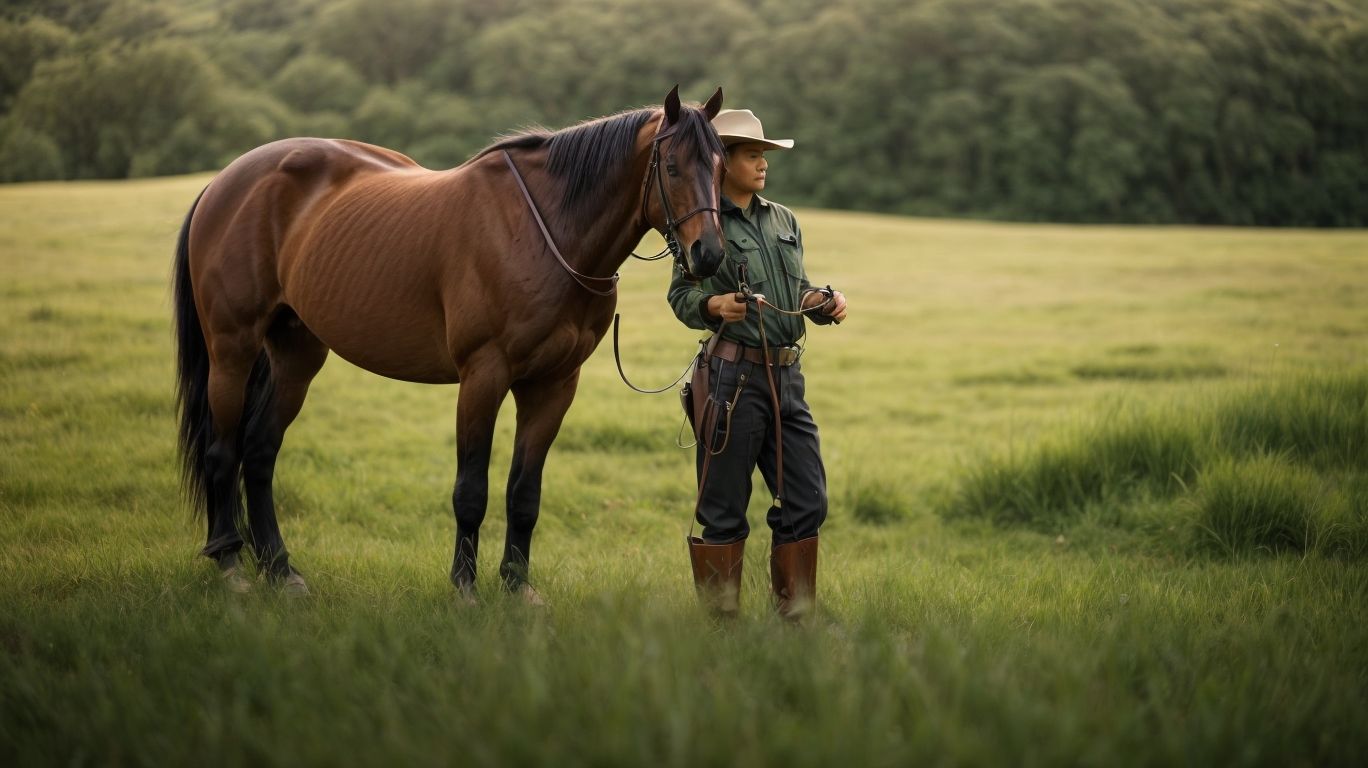
Photo Credits: Www.Horsespeakeducation.Com by Brandon Green
Dealing with behavioral issues in horses? Get ready to troubleshoot! In this section, we’ll tackle common ground manners problems that horse owners often face. From nipping and biting to pushiness and ignoring personal space, we’ll shed light on these behaviors. Oh, and don’t worry, we’ll also tackle bucking or kicking out, as well as resistance to leading or haltering. So, saddle up and let’s dig into these challenges head-on!
Nipping and Biting
- Dealing with the common behavioral issues of nipping and biting is essential when it comes to the safety and proper training of horses. Here are several strategies that can be implemented:
- It is crucial to employ consistent discipline to address nipping and biting. Whenever these behaviors occur, deliver a firm “no” and lightly tap the horse’s muzzle.
- Offering appropriate outlets for chewing is also vital. Provide safe and suitable chew toys or treats to redirect their biting and nipping behaviors.
- Furthermore, it is important to address any underlying causes that may contribute to nipping and biting, such as boredom, pain, or fear. Identifying and addressing these issues will help prevent future behavioral problems.
- Implement positive reinforcement training techniques, such as rewarding good behavior with treats or praise. This will encourage positive habits and discourage nipping and biting.
- Consistent handling is key. Ensure that everyone who interacts with the horse abides by the same rules and boundaries. This will avoid confusion and reinforce appropriate behavior.
By applying these techniques early on, you can create a safe and respectful environment for both the horse and the handler.
Pushiness and Ignoring Personal Space
Ignoring personal space and displaying pushy behavior are common ground manners issues in horses. It is important to address these behaviors to establish respect and ensure safety.
Here is a table that highlights suggested techniques for dealing with pushiness and ignoring personal space:
| Issue | Technique |
|---|---|
| Pushiness | Use firm and consistent body language, create clear boundaries, and reinforce respectful behavior through rewards and consequences. |
| Ignoring personal space | Teach the horse to yield to pressure, establish a “no go” zone, and reinforce personal space by rewarding appropriate behavior and correcting when necessary. |
By incorporating these techniques, horse owners can effectively address pushiness and encourage their horses to respect personal space, ensuring a safer and more enjoyable experience for both horse and handler.
Bucking or Kicking Out
Bucking or kicking out is a common issue when it comes to horse ground manners. It is important to address this behavior as it can be dangerous for both the horse and the handler. Here are some tips to handle and prevent bucking or kicking out:
– Identify the trigger: Determine the cause of the behavior, such as fear, pain, or improper training.
– Address physical discomfort: Rule out any pain or discomfort by consulting a veterinarian or equine professional.
– Evaluate training techniques: Ensure that the horse’s training methods are consistent, clear, and reward-based.
– Gradual desensitization: Introduce the horse to stimuli that may trigger the behavior in a controlled and gradual manner.
– Seek professional help: If the behavior persists or escalates, consult a professional trainer or behaviorist for guidance.
True story: I had a horse that would consistently buck out of excitement when asked to canter. Through consistent training and working with a knowledgeable trainer, we were able to address the issue. By gradually introducing the canter and using positive reinforcement, we were able to mitigate the bucking or kicking out behavior and develop a more solid foundation in ground manners.
Resistance to Leading or Haltering
“Resisting resistance to leading or haltering can be a common issue in horse training, but it’s important to address it for the safety and cooperation of both the horse and handler. Here are some strategies to overcome resistance to leading or haltering:
| Consistency: | Establish a consistent routine and use clear and firm commands to communicate expectations. |
|---|---|
| Desensitization: | Gradually expose the horse to the halter and lead rope, using desensitization techniques to make them more comfortable. |
| Positive reinforcement: | Reward the horse for responding appropriately to leading or haltering with treats or praise. |
| Patience and persistence: | Take the time to work with the horse regularly and be patient as they learn and adjust to the process. |
| Professional guidance: | If the resistance persists, seek the assistance of a professional trainer who can provide expertise and guidance. |
Further Ground Manners Training Tips and Techniques
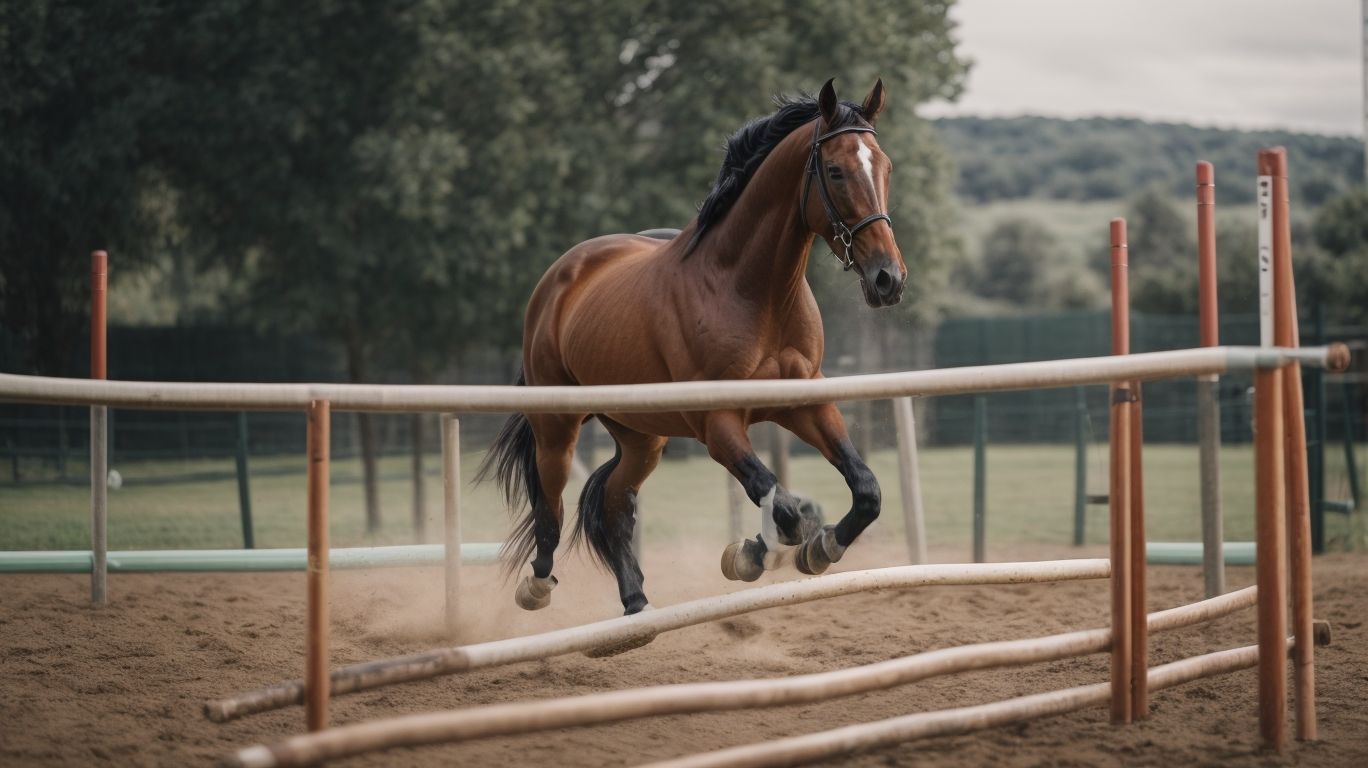
Photo Credits: Www.Horsespeakeducation.Com by Jonathan Clark
In our quest for effective horse behavior management, let’s delve into the world of further ground manners training tips and techniques. From mastering essential groundwork exercises to the finesse of longeing and round pen work, we’ll explore how these practices enhance our relationship with horses. We’ll unveil the art of liberty training and provide insights into advanced ground manners for those unique and special situations. So, saddle up and join us as we unlock the secrets to creating a harmonious bond with our equine friends.
Groundwork Exercises
Groundwork exercises are an indispensable aspect of horse training as they establish a solid foundation and foster trust and respect between you and your horse. Here are a few steps you can integrate seamlessly into your groundwork routine:
- Leading exercises: By confidently and respectfully leading your horse while maintaining a consistent pace and proper positioning, you can improve your horse’s obedience and trust.
- Back-up exercises: Teaching your horse to back up on command enhances their responsiveness and overall obedience.
- Circling exercises: Engaging in lunging or circling exercises with your horse improves their balance, coordination, and focus.
- Desensitization exercises: It is important to introduce your horse to various objects, sounds, and situations to boost their confidence and reduce reactivity.
- Obstacle courses: Creating an obstacle course with diverse challenges helps enhance your horse’s agility, problem-solving skills, and trust in your leadership.
Regularly integrating these groundwork exercises into your training routine will not only strengthen the bond with your horse but also establish a solid foundation for further training.
Longeing and Round Pen Work
Longeing and round pen work, which are important exercises in horse training, promote physical fitness, mental focus, and communication between horse and handler.
- Start by acquainting the horse with the round pen or longe line in a controlled environment.
- Teach the horse verbal and physical cues for walk, trot, canter, and halt.
- Gradually enhance the horse’s fitness levels through appropriate warm-up and cool-down periods.
- Utilize various training aids, like whips or longe lines, to assist in communication.
- Practice altering directions, transitions, and circles of various sizes to enhance flexibility.
Longeing and round pen work have been utilized for centuries by horsemen to develop obedience, athleticism, and trust in their horses. Ancient civilizations, such as the Greeks and Romans, acknowledged the benefits of these exercises and integrated them into their equestrian training practices. Nowadays, longeing and round pen work continue to be popular methods for starting young horses, rehabilitating injured horses, and maintaining the overall well-being of equine athletes.
Liberty Training
Liberty Training is a technique of training horses without utilizing ropes or physical constraints. It enables the horse to freely move and make choices throughout the training procedure. Here are some steps to practice Liberty Training with your horse:
- Start in an enclosed area where the horse feels safe.
- Establish a strong bond and trust with the horse through groundwork exercises.
- Focus on clear communication using body language and cues.
- Gradually introduce Liberty Training exercises such as circling, changes of direction, and stops.
- Reward the horse for correct responses, and always keep training sessions short and positive.
Fun fact: Liberty Training can enhance the horse’s confidence, responsiveness, and overall relationship with the trainer.
Advanced Ground Manners for Special Situations
Advanced ground manners training is essential for effectively handling horses in special situations. Here are some steps to consider for ensuring your horse’s behavior in these circumstances:
- 1. Building Trust: Establish a strong foundation of trust and respect with your horse through consistent training and positive reinforcement.
- 2. Desensitization: Expose your horse to various objects, sounds, and environments to help them remain calm and focused in unfamiliar situations.
- 3. Leading and Haltering: Practice leading and haltering exercises in different environments, ensuring your horse maintains their manners and responds to cues.
- 4. Dealing with Health Issues: Train your horse to stand still for veterinary procedures or bodywork, addressing any concerns with patience and gentle handling.
- 5. Trailer Loading: Teach your horse to load and unload from a trailer calmly and confidently, ensuring their safety during transportation.
- 6. Advanced Riding Skills: Work on more advanced riding techniques, such as collection, lateral movements, and obstacle courses, to enhance your horse’s overall responsiveness and obedience.
Some Facts About Horse Behavior Management – Horse Ground Manners:
- ✅ Horses with poor ground manners often invade personal space and display a lack of respect for authority. (Source: Our Team)
- ✅ Establishing respectful ground manners with a horse involves asserting leadership and making it clear that you are in charge. (Source: Our Team)
- ✅ Consistency and repetition are key in teaching horses good ground manners. (Source: Our Team)
- ✅ Gaining a horse’s respect on the ground improves their willingness to accept guidance when riding. (Source: Our Team)
- ✅ Different individuals may require different techniques to convey their leadership role to horses. (Source: Our Team)
Frequently Asked Questions
How can I teach my horse good ground manners?
To teach your horse good ground manners, it is important to establish your authority as the leader. Use body language, discipline techniques, and consistent repetition of rules to gain your horse’s respect. Different techniques may be necessary depending on your personality type, so be sure to convey your leadership role confidently. Consistency is key, as horses learn through repetition. Start by teaching basic skills such as backing up, and gradually increase the consequences for breaking the rules as the horse learns.
Why are good ground manners important for horses?
Good ground manners are important for horses to respect their owner’s space and react to their body language. Horses that invade personal space or engage in disrespectful behaviors consider themselves the leader or equal to their human, which can be dangerous and confusing. Establishing good ground manners ensures a safe and enjoyable partnership between horse and owner.
What are some common behaviors that indicate a lack of respect for the owner’s authority?
Behaviors such as pushing into personal space, rubbing on the owner, or nipping indicate a lack of respect for the owner’s authority. Horses that engage in these behaviors consider themselves the dominant entity or equal to their human, which can lead to potential harm. It is important to address these behaviors and establish clear boundaries to ensure a safe and respectful relationship.
How can I establish clear communication and avoid confusing messages with my horse?
To establish clear communication with your horse, use consistent physical language and tone of voice. Avoid giving conflicting or unclear commands. Horses understand physical cues and respond best to calm confidence in your leadership. Make sure your actions and commands align, and avoid sending mixed messages. Consistency in your communication will help your horse understand what is expected of them.
Why is it important to gain my horse’s respect and form a leader/herd-mate bond?
Gaining your horse’s respect and forming a leader/herd-mate bond is important for their safety and the success of your partnership. Horses are herd animals and naturally respect the herd leader. By establishing yourself as the leader and demonstrating calm assertiveness, your horse will be more likely to accept your guidance and follow your commands. This bond will also make working with your horse more enjoyable and reduce the risk of accidents or disobedience.
What are the potential dangers of allowing a horse to treat the owner as an equal or follower?
Allowing a horse to treat the owner as an equal or follower can lead to potential harm. Horses are much larger and stronger than humans, and when they do not recognize the owner as an authority figure, they may become pushy, invade personal space, or exhibit dominant behaviors. This can result in physical danger and make handling the horse challenging. It is essential to establish proper manners and boundaries to ensure a safe and respectful relationship with your horse.
